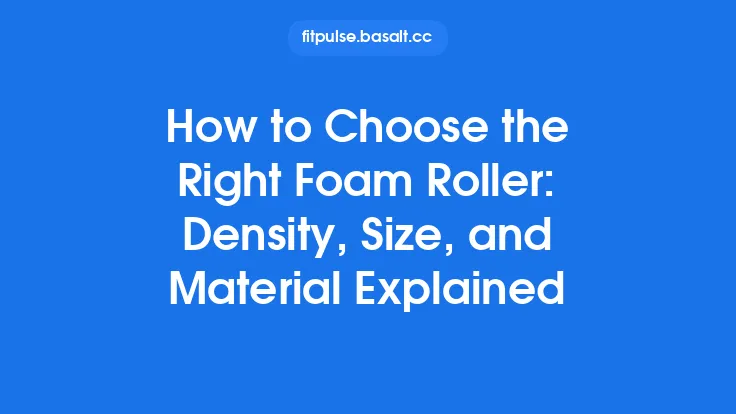Compression apparel can be a game‑changer for recovery, performance, and injury prevention—if it fits correctly. An ill‑fitting piece can restrict blood flow, cause discomfort, or even exacerbate the very issues you’re trying to mitigate. This guide walks you through every step of sizing and fitting compression garments so you can reap their full benefits, regardless of whether you’re a seasoned athlete, a weekend warrior, or someone simply looking to support everyday circulation.
Understanding Compression Levels and Pressure Zones
Before you even pick up a measuring tape, it helps to know what “compression” actually means in the context of apparel.
| Compression Class | Typical Pressure (mmHg) | Typical Use Cases |
|---|---|---|
| Light (8‑15 mmHg) | Gentle, barely perceptible | Travel, light daily wear |
| Moderate (15‑20 mmHg) | Noticeable support, improves venous return | Post‑exercise recovery, mild swelling |
| Firm (20‑30 mmHg) | Strong, therapeutic compression | Post‑surgery, chronic venous insufficiency |
| Very Firm (30‑40 mmHg) | Medical‑grade, prescribed | Severe edema, deep‑vein thrombosis prevention |
Pressure zones refer to the intentional variation in compression along a garment. For example, a calf sleeve may apply higher pressure at the ankle (to push blood upward) and gradually decrease toward the knee. Understanding the intended pressure profile of a specific product helps you verify that the fit you achieve matches the design intent.
Measuring Your Body Accurately
A precise measurement is the foundation of a proper fit. Follow these steps with a flexible cloth measuring tape (the kind used for sewing) and a mirror or a friend for assistance.
- Identify the garment type – Different pieces (socks, sleeves, tights, shorts) require measurements at distinct anatomical landmarks.
- Take measurements while standing – Muscle tone and limb shape change when you sit or lie down, potentially skewing results.
- Record to the nearest 0.5 cm (or ¼ in) – Small differences can shift you from one size to another, especially in tighter compression classes.
Key Measurement Points
| Garment | Measurement Location | How to Measure |
|---|---|---|
| Compression socks/stockings | Ankle circumference | Wrap the tape snugly around the narrowest part of the ankle, just above the malleolus. |
| Calf circumference | Measure at the widest part of the calf (usually 10‑15 cm below the knee). | |
| Biceps circumference (if applicable) | Around the fullest part of the upper arm, with the arm relaxed. | |
| Compression sleeves (arm/leg) | Upper arm/Thigh circumference | At the midpoint between the shoulder and elbow (arm) or between the hip and knee (thigh). |
| Wrist/Ankle circumference | Same method as for socks, at the narrowest point. | |
| Compression tights/shorts | Hip circumference | Around the fullest part of the hips, keeping the tape level. |
| Inseam length | From the crotch seam to the desired end point (ankle for full tights, mid‑calf for shorts). | |
| Waist circumference | At the natural waistline, not the highest point of the ribcage. |
Tip: Take each measurement twice and use the larger value. Human bodies are not perfectly symmetrical, and a slightly larger reading ensures you won’t end up with a garment that’s too tight on one side.
Interpreting Manufacturer Sizing Charts
Most reputable brands provide a sizing chart that maps your measurements to their product sizes (S, M, L, etc.) or numeric ranges (e.g., 30‑34 cm). However, charts can differ between brands because of:
- Target compression class – Higher compression often means a tighter cut, so a “Medium” in a 20‑30 mmHg line may feel tighter than a “Medium” in a 8‑15 mmHg line.
- Intended fit style – Some brands design a “snug” feel for performance, while others aim for a “comfort” feel for everyday wear.
Steps to use a chart effectively:
- Locate the correct chart – Ensure you’re looking at the chart for the exact product (e.g., calf sleeve vs. full‑leg sleeve).
- Match each measurement – Align your recorded numbers with the chart’s columns. If you fall between two sizes, choose the larger for moderate compression; for firm/medical compression, choose the smaller only if the larger size would feel loose.
- Check the pressure rating – Some charts list the expected pressure range (e.g., “15‑20 mmHg”). Verify that the size you select aligns with the pressure you need.
When in doubt: Contact the brand’s customer service with your measurements. Many manufacturers will confirm the best size or suggest a trial size if you’re on a borderline.
Tips for Trying On Compression Garments
Even with perfect measurements, the first wear can feel unusual. Follow these practical steps to confirm a proper fit:
- Wear the garment in a neutral position – Stand upright, arms relaxed at your sides, and avoid flexing the muscles heavily.
- Check for “pinching” or “gapping” –
- Pinching occurs when the fabric digs into the skin, indicating it’s too tight.
- Gapping (visible folds or sagging) means it’s too loose.
- Assess the pressure gradient – You should feel a gentle, even pressure that is strongest at the distal end (ankle, wrist) and gradually lessens proximally.
- Move through a full range of motion – Walk, squat, or raise your arms. The garment should stay in place without rolling, bunching, or restricting movement.
- Look for “red lines” – Some compression fabrics leave faint red marks after removal if they’re overly tight. A light, temporary tint that fades quickly is normal; persistent redness suggests a size issue.
If a garment fails any of these checks, try the next size up or down (depending on the issue) before purchasing a different brand.
Adjusting Fit for Different Body Types
People come in a wide variety of shapes, and a one‑size‑fits‑all approach rarely works for compression wear. Below are strategies for common body‑type challenges.
1. Athletes with Large Muscle Mass
- Problem: Bulky calves or thighs can exceed standard size ranges.
- Solution: Look for “extended” or “muscle‑fit” lines that offer larger circumference ranges while maintaining the same pressure gradient. Some brands also provide “custom‑fit” options where you can input exact measurements for a made‑to‑order garment.
2. Individuals with Narrow Ankles/Wrists
- Problem: Standard sleeves may bunch at the narrowest point, creating uncomfortable pressure spikes.
- Solution: Choose garments with a graduated compression profile that tapers more aggressively at the distal end, or opt for a size that includes a “narrow ankle/wrist” option.
3. People with Swelling (Edema) or Post‑Surgical Changes
- Problem: Limb circumference can fluctuate day‑to‑day.
- Solution: Use adjustable compression designs that feature hook‑and‑loop (Velcro) closures or zip‑up panels. These allow you to tighten or loosen the garment as swelling subsides.
4. Tall vs. Short Users
- Problem: Length mismatches (e.g., a sleeve that ends too high on a tall person).
- Solution: Verify the inseam or sleeve length in the product description. Some brands list “regular” and “long” versions; if unavailable, consider a custom‑tailored option.
Common Fit Mistakes and How to Avoid Them
| Mistake | Why It Happens | How to Fix It |
|---|---|---|
| Choosing size based on “usual” clothing | Compression garments are engineered for pressure, not fashion fit. | Always measure and consult the specific sizing chart. |
| Wearing the garment over bulky clothing | Extra layers add circumference, leading to a too‑tight fit. | Put on compression gear directly on skin or a thin, moisture‑wicking base layer. |
| Ignoring the pressure gradient | Assuming uniform pressure is acceptable. | Verify that the distal end feels tighter than the proximal end; if not, try a different size or brand. |
| Using the wrong size for the compression class | Selecting a “Medium” in a 30‑40 mmHg line when you need 15‑20 mmHg. | Match the size to both measurement and intended pressure level. |
| Not re‑measuring after weight changes | Body dimensions shift with training cycles or weight loss/gain. | Re‑measure every 3‑6 months or after significant body composition changes. |
Maintaining Proper Fit Over Time
Even the best‑fitted garment can drift out of its optimal range with regular wear. Here’s how to keep the fit consistent:
- Monitor wear frequency – Most compression apparel is designed for daily wear up to 8 hours or continuous wear for 24 hours (medical‑grade). Exceeding these limits can cause fabric fatigue, reducing pressure.
- Check for fabric stretch – Over time, elastic fibers lose their rebound. Perform a quick “stretch test”: pull the fabric gently; if it stretches more than 10 % beyond its original length, consider replacing it.
- Replace after the recommended lifespan – For most performance‑grade compression gear, the effective lifespan is 6‑12 months of regular use. Medical‑grade pieces may need replacement sooner, especially if they’re used for therapeutic compression.
- Re‑measure after major life events – Pregnancy, significant weight gain/loss, or surgery can alter limb dimensions dramatically. Re‑measure and adjust size accordingly.
Frequently Asked Questions on Sizing and Fit
Q: Can I wear a size larger for comfort?
A: A larger size reduces the intended pressure, potentially negating the benefits of improved circulation and muscle support. If comfort is an issue, first verify that you’re using the correct compression class; a lower pressure rating may be more appropriate.
Q: My calf measures 38 cm, but the chart only goes up to 36 cm. What should I do?
A: Look for brands that offer “extended” or “muscle‑fit” ranges. If none are available, a custom‑made garment is the safest option to ensure proper pressure without excessive tightness.
Q: Do I need to size my compression socks differently for the left and right foot?
A: Most socks are designed to be symmetrical, but if you have a noticeable size discrepancy between legs, you can buy a pair of single socks (often sold as “left/right”) and size each individually.
Q: How can I tell if the pressure is too high without a pressure gauge?
A: Excessive pressure often manifests as numbness, tingling, or a burning sensation. The garment should feel snug but not painful. If you experience any of these symptoms, reduce the compression level or try a larger size.
Q: Is it okay to wear compression garments over tattoos?
A: Yes, but ensure the garment is not too tight over the tattooed area, as excessive pressure can cause irritation or affect healing. A moderate compression level is advisable until the tattoo is fully healed.
By following the measurement protocols, interpreting sizing charts accurately, and paying close attention to how the garment feels during movement, you can guarantee that your compression apparel delivers the intended therapeutic and performance benefits. Proper sizing isn’t just a matter of comfort—it’s the key to unlocking the full potential of compression technology for recovery, injury prevention, and everyday well‑being. Happy fitting!




